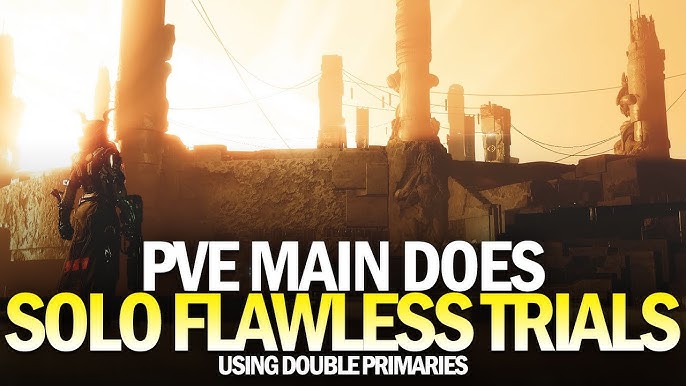How to Go Flawless in Trials of Osiris — Proven Strategies for Destiny 2

Going Flawless in Trials of Osiris is Destiny 2’s most enduring PvP challenge. Weapons get nerfed, maps rotate, meta shifts—but the fundamentals that carry Guardians to 7–0? They stay the same.
If you want to skip the learning curve and experience the Lighthouse without the grind, you can always team up with seasoned pros through a Trials carry Destiny 2 service. It’s a shortcut to see Flawless firsthand—while picking up strategies you can use in your own future runs.
But whichever tactics you choose, here’s the complete, meta‑proof blueprint that will carry you from your first round to your first Flawless—and keep working no matter how Destiny 2 evolves.
The Mindset That Wins Trials

Flawless runs aren’t just about mechanical skill—they’re about mental endurance. You need to be able to reset after a bad round, keep your focus under pressure, and treat every match like a puzzle, not a personal attack.
Think in “rounds,” not “the card”
If you’re staring at that card and counting how many wins you still need, you’re already tilting yourself. Break it down:
- Win the next round. That’s all that matters.
- Stack enough small wins and the card takes care of itself.
This mindset helps you stay loose, which is critical—tense players make predictable mistakes
Accept variance
Trials matchmaking will sometimes hand you a stomper team. Other times, you’ll meet a squad that seems allergic to cover. You can’t control who you face—you can control how you play.
The best Flawless players don’t fixate on “bad luck.” They treat each opponent as a different tactical exercise.
Develop a reset ritual
When you lose a round, do something small but consistent before the next one starts:
- Adjust your chair
- Take a deep breath
- Swap lanes with a teammate
These tiny resets prevent tilt from bleeding into your next decisions.
Communication & Team Synergy
In Trials, great comms turn good shooters into dangerous opponents.
Assign roles early
Your team should decide before the first round who’s taking which job:
- Entry: pushes angles, gets first pick opportunities.
- Anchor: holds a power lane, watches flanks.
- Flex: adapts, trades revives, cleans up.
Without defined roles, your positioning will get sloppy under pressure.
Adapting to Opponent Playstyles
Read their openers
Do they rush mid every round? Anchor back? Split push?
Two rounds in, you should have a mental profile of their defaults.
Punish habits
If they overpeek the same lane, set a sniper trap.
If they turtle in spawn, push with grenades and cut off exits.
Disrupt supers
Don’t let an enemy super run the round. Team-shot it, bait it into a dead zone, or force it early with pressure.
Change pace intentionally
If you’ve been slow-playing and it’s not working, call for a full push. If you’ve been rushing, try a bait-and-hold. Keep them guessing.
Common Mistakes That Kill Flawless Runs
- Ignoring the radar: It’s not decoration—read it constantly.
- Overchasing: You get one pick, then run into their spawn solo.
- Panicking after a loss: One round down doesn’t mean the match is over.
- Tunnel vision on kills: Trials is about round wins, not topping the scoreboard.
- Not practicing outside Trials: Scrims and other PvP modes sharpen reflexes without card pressure.
FAQ
Q: Do I need meta weapons to go Flawless?
A: No—awareness, positioning, and teamwork outweigh raw gear. Meta weapons help, but they don’t carry bad habits.
Q: Can solo players go Flawless?
A: Yes, but it’s harder. Use LFG or Fireteam Finder to secure like-minded teammates.
Q: How important is KD?
A: Not as much as decision-making. A high KD helps, but smart plays win rounds.
Q: Should I save supers for later rounds?
A: Usually yes—but if a super can swing momentum early, use it.
Final Thoughts
The fundamentals in this guide will hold through meta shifts, map changes, and whatever Trials looks like in three seasons. Practice them, refine them, and one day you’ll be standing at the Lighthouse looking back, wondering why it ever seemed so hard.
